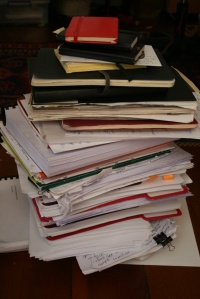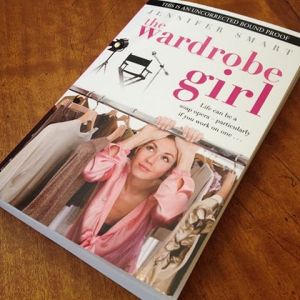 The Words that Formed The Wardrobe Girl
The Words that Formed The Wardrobe Girl
Word count. Writers are addicted to their word count. That little self-help tool that ticks over in the tool bar of your document pushing you towards that much sought after sign off – The End.
But when is enough, enough and how will you know?
There are no easy answers to those questions (sorry if I was holding out false hope there). There are lots of ifs, buts, maybes and how long is a piece of string kind of responses. Sometimes it’s dependent on genre, so if you’re writing a picture book, 400 crisply chosen, precise words maybe all you need, but a Scifi or Fantasy epic may need 120,000 words to paint the world and tell the story.
My book, The Wardrobe Girl, is just 94,000 words, but I’d say I probably wrote at least 200,00 to achieve the 94,000 words that made it into the published copy. My first draft came in at 105,000 words, but there were many rewrites and scrunched up sheets of paper on the way. Most of those words were handwritten (I’m an old-fashioned pencil/pen and paper girl) before they made it onto a word document. Although, I have allowed myself some artistic license there – I never scrunch up my sheets of paper and I’ve never had an overflowing waste paper basket, the Hollywood shorthand for writer at work, trying to breakthrough writer’s block. Oh no, we have blogs for that these days!
My words are kept, usually between the covers of a Moleskine. I carry a notepad with me ready to write down any conversational gems I overhear or to take note of someone’s outfit, or idiosyncracy. The journals are my starting point for the writing, although, for some reason book 2 is currently being written on a blank foolscap pad – I’m not sure if this working for me, I’ll let you know. Sometimes my words are retrieved or used elsewhere. It might just be a phrase I’ve highlighted or a whole paragraph. Sometimes a whole scene has been resurrected. I know there’s all kinds of software that does it for you, but 1, I’d have to learn how to use it and 2, I like to have physical access to them.
But, how did I know when enough was enough?
I didn’t really. I reached a point where I knew it still needed work, but wasn’t sure how to quite go about it. With the encouragement of a friend, the wonderful writer A.D. Scott, I submitted my manuscript to her agent, and now mine, Sheila Drummond. The word count was sitting at about 96,500 at this stage, but I couldn’t see where to lose those 6,500 words to hit the magical 90,000 word mark for my genre – contemporary women’s fiction (aka – chick lit). Sheila reassured me that when a publisher got hold of it I would have all the guidance I needed.
And she was right.
Although the rewriting isn’t necessarily any easier during the editing process, at least you have some guidance and all those tracking changes down the side. You know where to cut, massage and completely rewrite. But without any words, you can’t do any of those things.
So how many words? As many as it takes. Listen to your intuition, because those gut instincts are you usually right. Don’t be scared to write it big and write it ugly, those words can be refined. In the end, the answer always comes down to the same thing. Write. Put one word down after another and you will form a sentence and the sentences will eventually a become your book.






